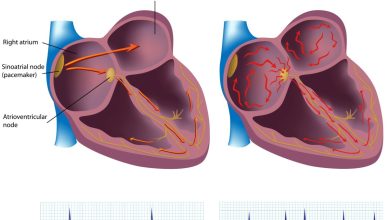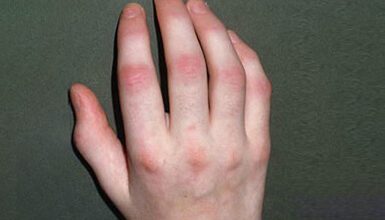Microscopic Colitis Symptoms, Causes, Diagnosis and Treatment

What Is Microscopic Colitis?
Colon, or large intestine, is responsible to receive digested food from small intestine. It filters undigested food and removes water. Then the digested food is stored and is eliminated through bowel movements. Microscopic colitis is a condition in which inflammation of colon prevents it from absorbing the water and eventually the water leaves through the rectum in the form of diarrhea. The reason why it is called microscopic colitis is because the colon tissue must be examined under a microscope for identification. There are two types of colitis: Collagenous colitis in which the collagen layer gets abnormally thick and lymphocytic colitis in which the quantity of lymphocytes in colon tissue increases. However, experts are still unsure whether these are the two types or stages of one colitis.
What Are The Symptoms Of Microscopic Colitis?
The following symptoms are likely to evolve in microscopic colitis:
- Watery diarrhea but is not characterized by blood.
- Pain in abdomen.
- Weight loss.
- Fecal incontinence.
- Nausea.
- In extreme cases, rectum bleeding.
Medical attention is required if diarrhea does not go away after several days. Proper diagnosis and treatment is then needed.
What Causes Microscopic Colitis?
The actual factors that cause inflammation in the colon are unknown but studies have shown that the following may cause microscopic colitis:
- Toxins produced by the bacteria.
- Certain viruses.
- Medications such as Nonsteroidal anti-inflammatory drugs, ranitidine and acarbose.
- Autoimmune diseases such as rheumatoid arthritis, psoriasis and celiac disease.
In some cases, researchers claimed that genetic factors may also lead to colon inflammation such as Crohn’s disease and ulcerative colitis.
What Are The Risk Factors Of Microscopic Colitis?
People with the following characteristics are at a higher risk of suffering from microscopic colitis:
- Smoking that affects colon especially to people with ages between 16 and 44.
- Age of between 50 and 70.
- More common in women.
- Underlying immune system diseases.
People who consume certain medicines are also at a risk of having microscopic colitis.
How Is Microscopic Colitis Diagnosed?
In order to diagnose microscopic colitis, doctors may observe the medical history to look out for disorders and diseases like rheumatoid arthritis and celiac disease. Moreover, they may require information about the medicines that a victim is taking to see if any medicine that could lead to colon inflammation is being consumed. Other than examinations, the following tests could be helpful to rule out other probabilities:
- Upper endoscopy with biopsy to rule out any doubts for celiac disease.
- Stool sample analysis to make sure diarrhea is not due to an infection.
- Flexible sigmoidoscopy with biopsy to rule out several other intestinal disorders.
How Is Microscopic Colitis Treated?
While microscopic colitis may cure by itself in some cases, treatment is required in others. Doctors usually suggest a gradual step by step approach for treatment if the condition gets worse.
- Alterations in diet and medication. Victims may be suggested to consume fewer amounts of fats and fiber and may also need to discontinue some medications.
- To improve symptoms, doctors may recommend medications to prevent diarrhea, control inflammation and suppress the immune system.
- In very severe cases, a surgery may be required.
By : Natural Health News




